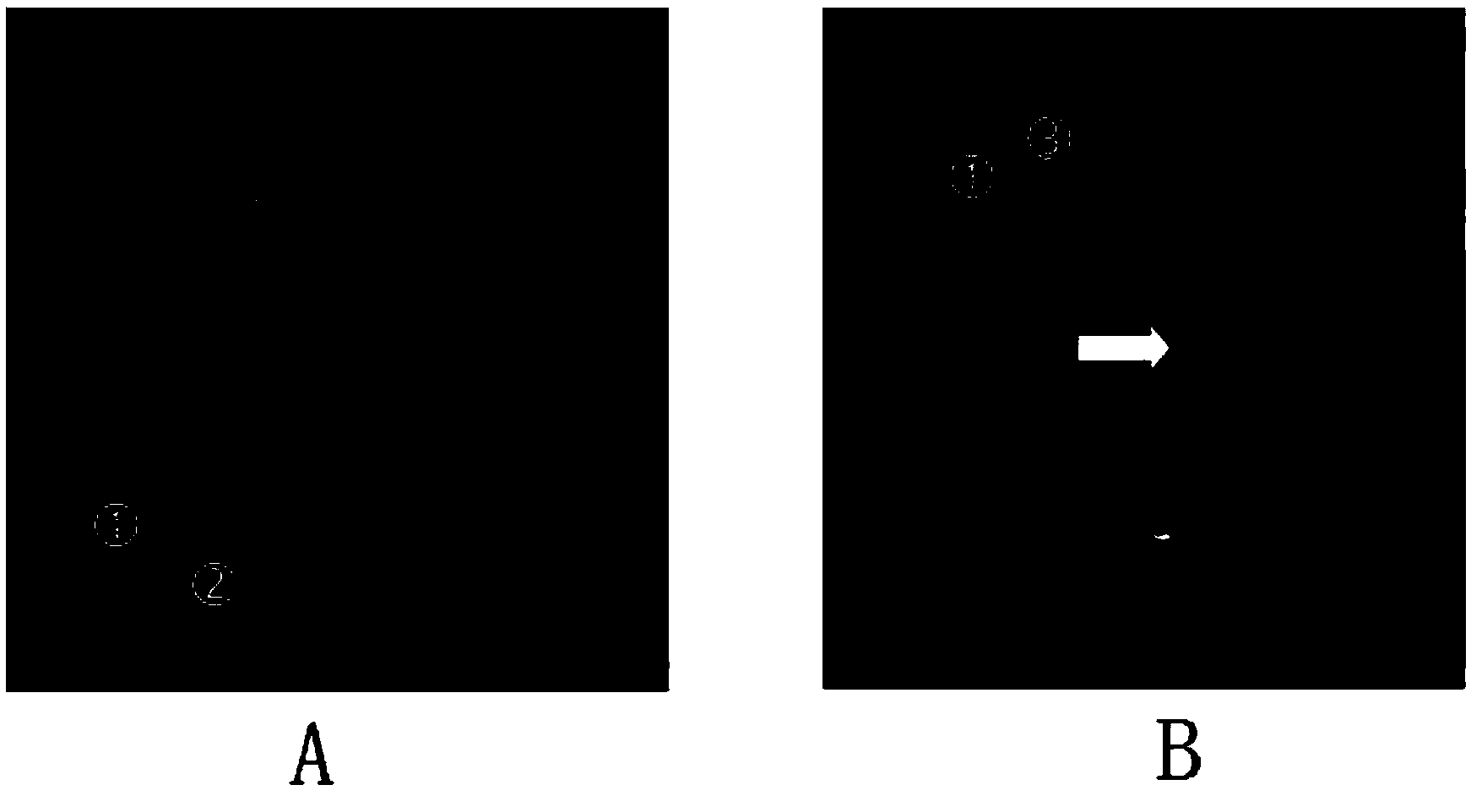FISH (fluorescence in situ hybridization) probe, kit and detection method for detecting Her2 (human epidermal growth factor receptor 2) gene free from repetitive sequence
A repeat sequence and kit technology, applied in the field of FISH probes, can solve the problems of reducing the specificity and sensitivity of FISH detection
- Summary
- Abstract
- Description
- Claims
- Application Information
AI Technical Summary
Problems solved by technology
Method used
Image
Examples
Embodiment 1
[0083] Synthesis of primer sets: through the online analysis database Repeat Masking ( http: / / www.girinst.org / ) analyze the Her2 gene to obtain the repeated and non-repeated sequences of the Her2 gene (such as figure 1 shown), import the non-repeated sequence into the primer design software Primer5 for primer design, design the amplified product of the primers to be 350-800 bp, and synthesize the following 26 pairs of primers by artificial synthesis:
[0084] 1 F: 5' GGTTGGAATGAGTAAGAAGTAGC 3'
[0085] 1 R: 5' TAGGAATTTTCTAAAGGGGAGAC 3'
[0086] 2 F: 5' AGGTTAATGGTGGAAGTGGG 3'
[0087] 2 R: 5'ACACTCTACTATTAACATATGC 3'
[0088] 3 F: 5' TTTACTTTGGCTGCTGTTGC 3'
[0089] 3 R: 5' ATATTTTCGGATTTGGTATAGG 3'
[0090] 4 F: 5' TGGCTGTAGGTCAGAGTGGC 3'
[0091] 4 R: 5' AAGGATAAGGTGGAGTTTTGT 3'
[0092] 5 F: 5' TGGGTGATGGAATGATCTGG 3'
[0093] 5 R: 5' ACGAGTCTCCGAACAAAAGG 3'
[0094] 6 F: 5'AAAAGAAAACCAATGGGACAG 3'
[0095] 6 R: 5' CCCACGCCAACATAAATACAC 3'
[0096] 7 F: 5'TCCT...
Embodiment 2
[0141] Her2 gene BAC clone construction, the steps are as follows:
[0142] ① Genomic DNA preparation: DNA from breast cancer tissue was extracted using a commercially available DNA extraction kit;
[0143] ② Enzymatic digestion of genomic DNA: select restriction endonuclease HindⅢ to digest genomic DNA, and perform DNA electrophoresis on the digested products. After electrophoresis, select and recover DNA fragments of 200-300kb fragments;
[0144] ③ Ligation of large fragment DNA and BAC clone: Use commercially available pIndigoBAC-5 as the carrier, and construct the connection system according to the mass ratio of vector to large fragment DNA at a ratio of 1:10:
[0145]
[0146] Ligation at 16°C for 16 hours; treatment at 65°C for 20 minutes to inactivate T4 ligase; the ligation product was dialyzed with 0.025um Millipore membrane for 3 hours, the dialyzed ligation product was divided into 0.5ml centrifuge tubes, transformed into DH10B cells and cultured filter;
[0...
Embodiment 3
[0149] Centromeric STR sequence plasmid construction, the steps are as follows:
[0150] ① Due to the short centromere STR sequence (>700bp), the STR sequence was obtained by chemical synthesis;
[0151] ② Ligation of STR sequences with commercially available plasmids: Use commercially available T vector plasmids as carriers, and construct a ligation system with a 10ul system:
[0152]
[0153] ③ After shaking the above mixture gently, centrifuge at 12,000rpm for 30 seconds, and then keep it at 14°C overnight (12-16h);
[0154] ④ The connected product should be stored in a refrigerator at 4°C for later use or at -85°C for long-term storage.
PUM
 Login to View More
Login to View More Abstract
Description
Claims
Application Information
 Login to View More
Login to View More - R&D
- Intellectual Property
- Life Sciences
- Materials
- Tech Scout
- Unparalleled Data Quality
- Higher Quality Content
- 60% Fewer Hallucinations
Browse by: Latest US Patents, China's latest patents, Technical Efficacy Thesaurus, Application Domain, Technology Topic, Popular Technical Reports.
© 2025 PatSnap. All rights reserved.Legal|Privacy policy|Modern Slavery Act Transparency Statement|Sitemap|About US| Contact US: help@patsnap.com



